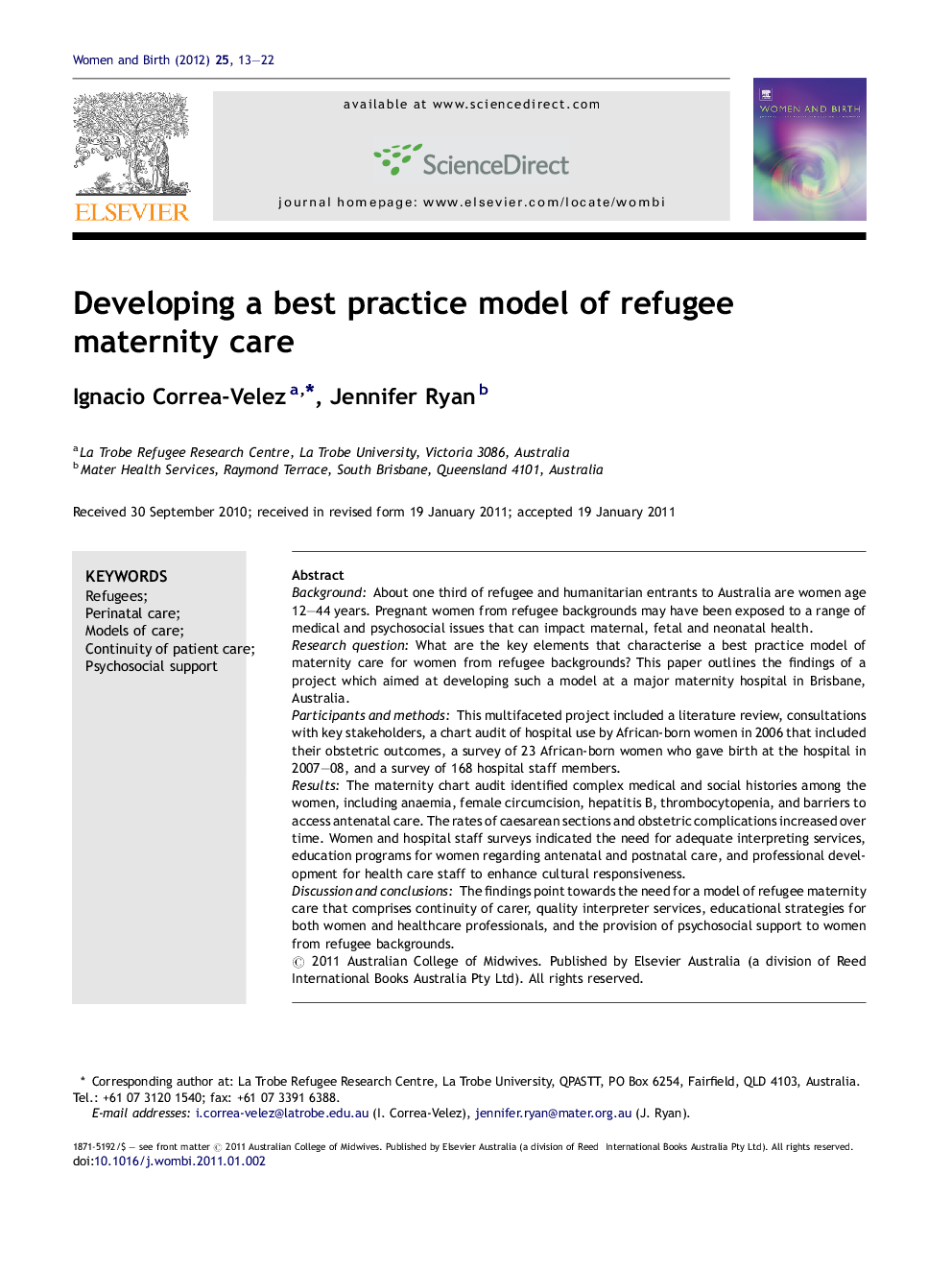| Article ID | Journal | Published Year | Pages | File Type |
|---|---|---|---|---|
| 2636748 | Women and Birth | 2012 | 10 Pages |
BackgroundAbout one third of refugee and humanitarian entrants to Australia are women age 12–44 years. Pregnant women from refugee backgrounds may have been exposed to a range of medical and psychosocial issues that can impact maternal, fetal and neonatal health.Research questionWhat are the key elements that characterise a best practice model of maternity care for women from refugee backgrounds? This paper outlines the findings of a project which aimed at developing such a model at a major maternity hospital in Brisbane, Australia.Participants and methodsThis multifaceted project included a literature review, consultations with key stakeholders, a chart audit of hospital use by African-born women in 2006 that included their obstetric outcomes, a survey of 23 African-born women who gave birth at the hospital in 2007–08, and a survey of 168 hospital staff members.ResultsThe maternity chart audit identified complex medical and social histories among the women, including anaemia, female circumcision, hepatitis B, thrombocytopenia, and barriers to access antenatal care. The rates of caesarean sections and obstetric complications increased over time. Women and hospital staff surveys indicated the need for adequate interpreting services, education programs for women regarding antenatal and postnatal care, and professional development for health care staff to enhance cultural responsiveness.Discussion and conclusionsThe findings point towards the need for a model of refugee maternity care that comprises continuity of carer, quality interpreter services, educational strategies for both women and healthcare professionals, and the provision of psychosocial support to women from refugee backgrounds.
